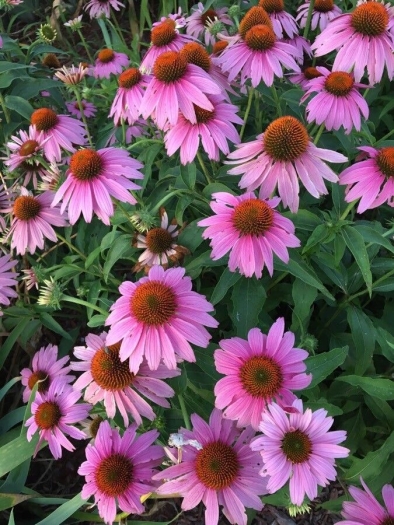Blacksamson Echinacea
(Echinacea angustifolia)
Blacksamson Echinacea (Echinacea angustifolia)
/
/

Clinton Beckley
CC BY-SA 4.0


















































Estimated Native Range
Summary
Blacksamson Echinacea is valued for its medicinal properties, as parts of the plant are used in herbal remedies to boost the immune system. It is also appreciated for its drought tolerance and ability to attract wildlife, such as butterflies and bees. Gardeners often use it in prairie-style plantings, borders, and as part of naturalistic landscapes. It thrives in full sun and adapts to a range of soil types, provided they are well-drained. While generally low-maintenance, it can be susceptible to aster yellows disease, which causes deformities in the flowers and foliage.CC BY-SA 4.0
Plant Description
- Plant Type: Herb
- Height: 1-2 feet
- Width: 0.8-1.5 feet
- Growth Rate: Moderate
- Flower Color: Pink
- Flowering Season: Summer
- Leaf Retention: Deciduous
Growth Requirements
- Sun: Full Sun, Part Shade
- Water: Low, Medium
- Drainage: Slow, Medium, Fast
Common Uses
Bee Garden, Bird Garden, Border Plant, Butterfly Garden, Deer Resistant, Drought Tolerant, Edible*Disclaimer: Easyscape's listed plant edibility is for informational use. Always verify the safety and proper identification of any plant before consumption., Fragrant, Hummingbird Garden, Low Maintenance, Rabbit Resistant, Showy Flowers, Street Planting
Natural Habitat
Native to the Great Plains and prairies of the Central United States
Other Names
Common Names: Black-Sampson Echinacea, Narrow-Leaf Echinacea, Narrow-Leaved Purple Coneflower, Kansas Snakeroot, Black Sampson, Narrow-Leaf-Coneflower, Blacksamson, Schmalblättriger Scheinsonnenhut, Smalbladig Läkerudbeckia, Narrow-Leaved Purple Coneflower
Scientific Names: , Echinacea angustifolia, Echinacea pallida var. angustifolia, Echinacea angustifolia var. strigosa, Brauneria angustifolia, Echinacea pallida var. strigosa,
GBIF Accepted Name: Echinacea angustifolia DC.